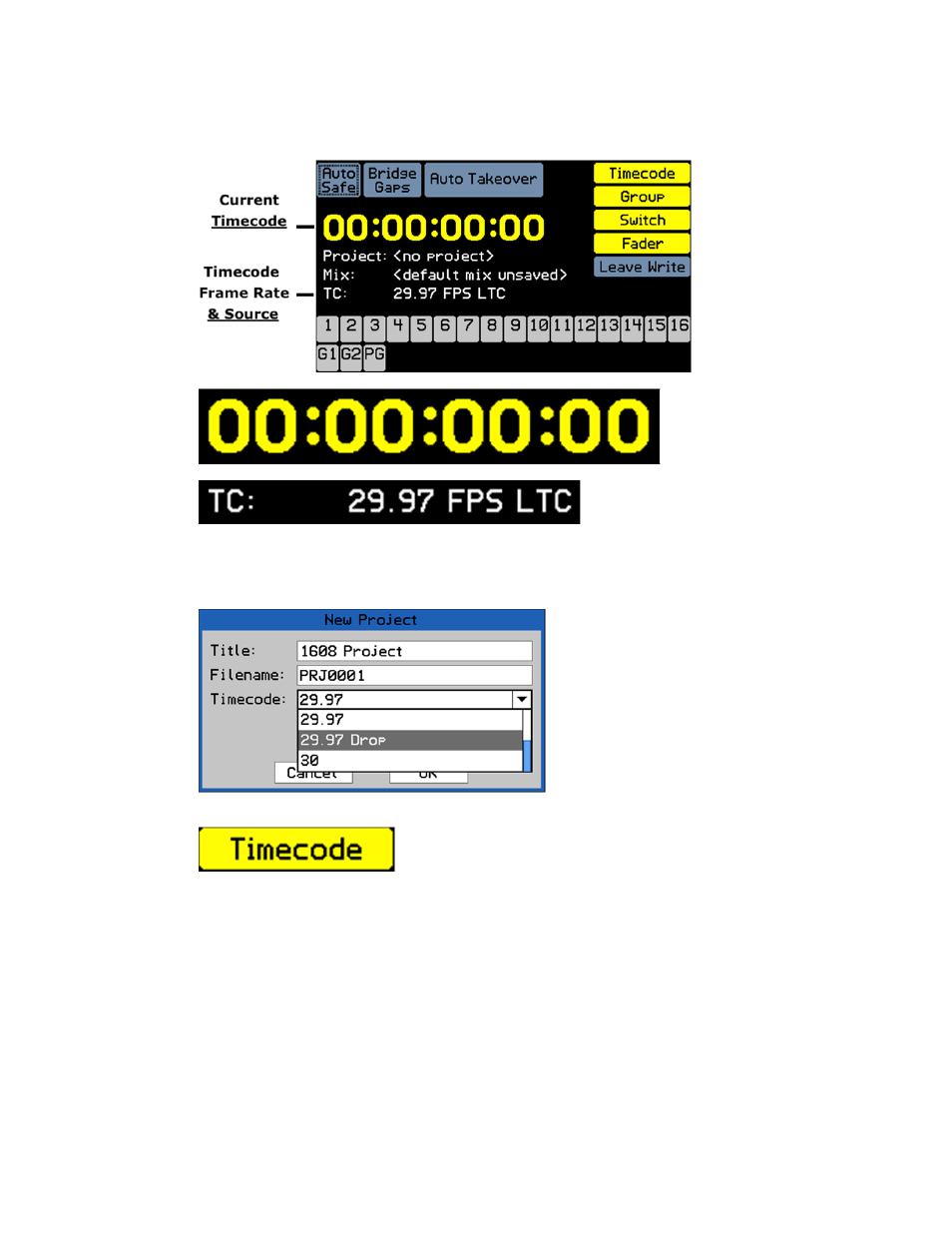API Audio 1608 Automation User Manual
Page 43

5.6 Timecode and Synchronization
The recorded media to be mixed (typically on DAW) must be synchronized with the 1608
automation package. SMPTE Timecode (LTC) or MIDI Timecode (MTC) is used for
synchronization.
The timecode source is set in the General Configuration dialog box in the System Menu.
The project frame rate is set at the time a new project is created.
In addition to synchronization, the automation system uses timecode in other ways:
Stopping timecode causes the automation system to perform its end-of-pass processes
“Auto Takeover” uses a timecode address to restore the previous automation mode
“Bridge Gaps” uses timecode to know the transport has been moved forward
Setting timecode ranges for offline data trimming
Setting timecode ranges for copy and swap mix data functions
Setting timecode ranges for clear mix data functions
SMPTE timecode (LTC) is received via the line-level XLR input on the back of the console.
MIDI timecode (MTC) is received via a MIDI IN port on the back of the console. A MIDI port must
be configured for MTC communication.
To improve synchronization accuracy, the number of “freewheel frames” needs to be set. This is
set using the “Freewheel” pull-down menu in the General Config dialog box, available from the
System Menu. The number of frames will determine the tolerance the system will use when
Timecode must be “enabled” in order to be used by the Automation
Controller. To enable timecode, engage the “Timecode” button on
the Status Page.
Timecode Display:
Hours:Minutes:Seconds:Frames
The timecode frame rate is determined by
the frame rate of the open project.
The system can use six (6) SMPTE timecode
frame rates:
23.976
24
25
29.97 (default)
29.97 drop
30
The current timecode
address, frame rate, and
source are displayed on
the Status Page.
